Sapphirine Granulite
The occurrence of high grade metamorphic rocks such as sapphirine-bearing granulites and charnockites and widespread migmatisation make the Gruf complex unique within the Central Alps.The Gruf Complex, which is approximately 20x10 km in size, is located at the south-eastern margin of the Lepontine Dome. To the north, it is bordered by the Mesozoic ophiolitic Chiavenna Unit, to the east it is cut by the 30-32 Ma old calc-alkaline Bergell Pluton, while to the south and west it is confined by the 24-25 Ma old Novate S-type Granite and the Adula Nappe (Fig.1).
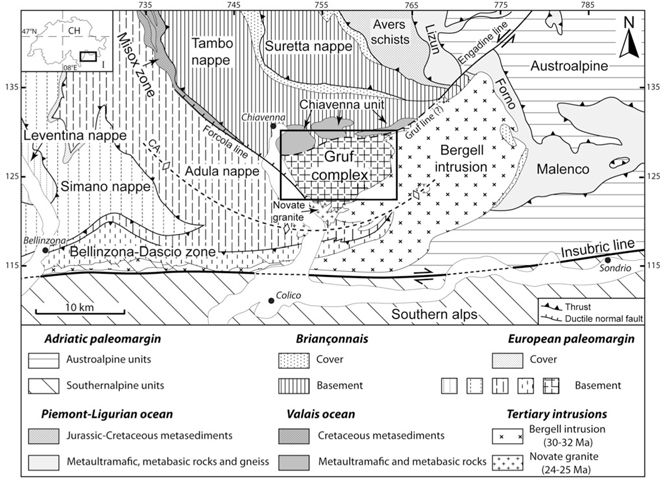
Fig.1: Sketch map of the eastern Central Alps, on the Switzerland-Italy border. (Black box = Area of Fig.2). Modified from Galli et al., (2011).
The Gruf Complex (Fig.2) predominantly consists of migmatitic quartzo-feldspathic orthogneisses, paragneisses and biotite-sillimanite-garnet-(±cordierite)-bearing metapelitic rocks. The latter show mid Tertiary metamorphic conditions of upper amphibolites facies. Migmatization mostly occurred contemporaneously with (or slightly post-dating) emplacement of the Bergell Pluton.
Numerous meter size lenses and cm-size nodules of mafic, ultramafic (Fig.8), metapelitic and calcareous composition occur throughout the migmatitic gneiss sequence and are particularly concentrated close to the contact with the Bergell Pluton. These rocks have been regarded as relicts of a former nappe boundary and were interpreted as the equivalent of the Chiavenna Unit.
Rare sapphirine-bearing granulites (Fig.11-12-13), discovered by Cornelius (1916) and Wenk et al. (1974) only in the form of loose blocks in Val Codera, represent the only crustal rocks formed at T>800 °C within the entire Central Alps. Granulites formed under ultra-high temperature (UHT) conditions of T = 920-940 °C and P = 8.5-9.5 kbar (Galli et al. 2011).
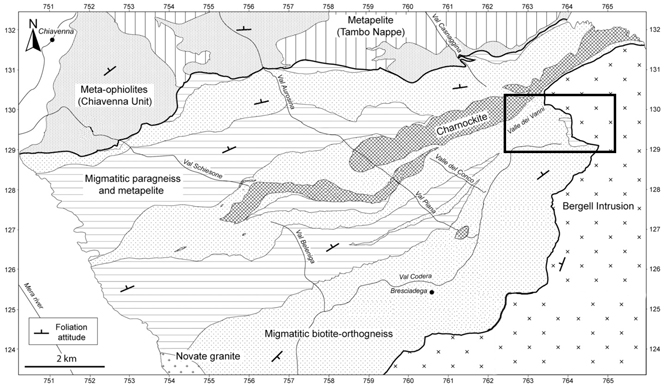
Fig.2: Simplified geological map of the Gruf unit. Black box = Location of sapphirine-bearing granulites (See Fig.3). Modified from Galli et al., (2011).
The Gruf complex essentially contains two groups of rock types: (i) migmatitic metagranitoids and (ii) partly migmatitic pelitic to psammitic metasediments. Small lenses of meta-ultramafic, -basic and –carbonate rocks occur within these two major groups, most prominently near Bivacco Vaninetti in the northeastern part of the Gruf complex (Fig.3).
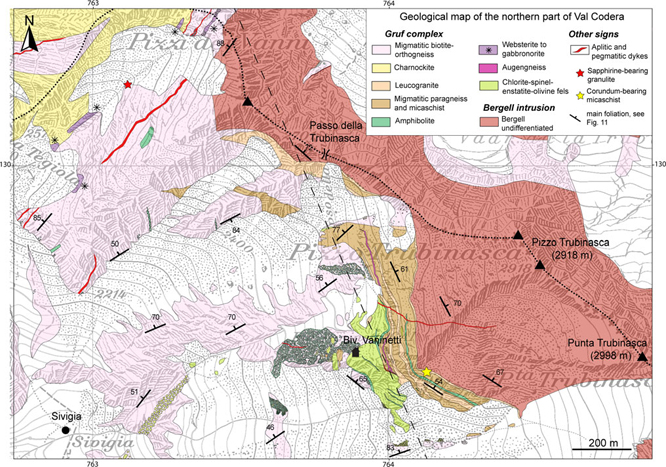
Fig.3: Detailed geological map of the contact between the Gruf complex and the Bergell intrusion near Bivacco Vaninetti (Black box of Fig.2). From Galli et al., (2013).
All these rock types, are commonly intruded by up to 5 m thick aplite and pegmatite dykes throughout the Gruf complex. Aplites and pegmatites are mostly composed of quartz, plagioclase, alkali feldspar and variable amounts of muscovite, biotite and garnet. Tourmaline and beryl occur locally.
Migmatitic biotite-orthogneiss
Migmatitic biotite orthogneisses (Fig.9-10) occur along the southern upper flank of Val Chiavenna and form the main part of Val Codera. This rock type appears greyish, coarsegrained and mainly consists of quartz, plagioclase, alkali feldspar and biotite. Its migmatitic character is expressed by a weak stromatic structure of alternating leucocratic, quartz and feldspar rich-bands, and melanocratic, biotite-rich bands. Meter-sized enclaves and up to a few hundred meters large lenses of basic, charnockitic granulitic, lherzolitic, websteritic to gabbronoritic, calcareous and pelitic composition occur throughout this biotite-orthogneiss.
Charnockite
The charnockites constitute sheet-like bodies (internally boudinaged) surrounded by anatomising mylonite zones. Two major, up to 0.5 km thick and 8 km long charnockite-rich large bodies can be mapped near the crest between Val Chiavenna and Val Piana. Intermediate size charnockite lenses (<100 m) also occur in Val Piana, Valle del Conco, Val Scarione and Val Aurosina. This rock type is leucocratic, with a pronounced brownish weathering colour and medium to coarse-grained. They are mostly composed of quartz, plagioclase, and perthitic alkali feldspar and some rare corroded orthopyroxene as well as biotite ± garnet and sillimanite.
Websterite to gabbronorite
Up to 50 m-sized lenses of websterite to gabbronorite occur within biotite-orthogneisses, often associated with charnockites, or directly in charnockites. All websterite/gabbronorite lenses are found within a km-wide zone reaching from Val Scarione in the west to Pizzo dei Vanni in the east. Websterites to gabbronorites exhibit a greenishbrownish colour of alteration, are massive, mid- to coarsegrained and characterised by cumulate textures. They are equigranular and dominated by euhedral to subhedral, up to 1 mm large clinopyroxene grains.
Granulite
Detailed mapping of the Gruf Complex has revealed the occurrence of six different types of granulite:
Type A: Massive sapphirine-orthopyroxene-cordierite-garnet granulite.
Type B: Massive sapphirine-bearing orthopyroxene-sillimanite-cordierite-garnet granulite.
Type C: Massive orthopyroxene-cordierite-garnet granulite.
Type D: Foliated sapphirine-orthopyroxene-garnet granulite.
Type E: Felsic, foliated sapphirine-bearing orthopyroxene-garnet granulite.
Type F: Felsic, foliated sapphirine-orthopyroxene granulite.
Type A and B granulites correspond to the sapphirine-bearing samples described in boulders from the debris scree to the east of Bresciadega in Val Codera (Cornelius, 1916), and investigated by Droop and Bucher-Nurminen (1984). Type C to F granulites and charnockites have not been previously identified.
The different types of granulite are widespread throughout the entire Gruf Complex. Types A and B have been identified as cm to meter size enclaves, both within migmatitic biotite rich orthogneisses (Valle dei Vanni) and within charnockites (Val Piana). However, no type A or B granulite has been found in outcrops at the historical locality near Bresciadega.
Type C granulites have been found exclusively as meter size boulders in the main rivers of Val Codera and Val Schiesone. Type D, E and F granulites form up to 1 m long and 40 cm thick schlieren within charnockites in Val Piana, Valle del Conco and Val Aurosina, also occurring as boulders in the main river of Val Codera.
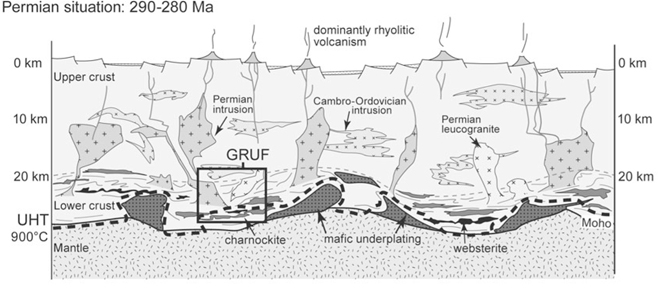
Fig.4: Situation during Permian rifting, charnockite intrusion and mafic underplating in the lower crust, granitic plutonism in the mid- to upper crust and surface volcanism. From Galli (2013).
The charnockite bodies show internal structures that are separate from those of the Gruf metasediments and the rest of the orthogneisses. Orthopyroxene-sapphirine bearing granulitic rocks in the charnockites imply that these rocks were produced by intense biotite-dehydration melting of pelitic rocks under ultra-high temperatures (UHT; 920-940 °C) at lower-crustal depth, 8.5-9.5 kbar (Galli et al. 2011), see Fig.4.
Polymineralic coronae and composite symplectites testify to an incomplete re-equilibration of the UHT peak assemblages at metamorphic conditions of 720-740 °C at 6.5-7.5 kbar (Galli et al. 2011). These pressures and temperatures for coronae and symplectites fit well with the migmatisation conditions of the Gruf complex as well as with the mid-Tertiary regional metamorphism in the southern and south-eastern parts of the Lepontine dome (700-750 °C at 6-7.5 kbar).
As for other granulites in the Alps (e.g. Ivrea zone, Malenco unit, Sesia zone, Sondalo complex), the UHT conditions in the Gruf complex were achieved during Permo-Triassic rifting. Intense partial melting of pelitic rocks at deep crustal levels during a rifting-related thermal climax produced orthopyroxene-bearing charnockitic melts and strongly refractory, orthopyroxene sapphirine-bearing granulitic residuals. Further support of this view is provided by the association of the charnockites and granulites with websterites and gabbronorites, the latter of cumulative origin. This is typical for the post-Variscan high temperature event that characterises much of the European crust.
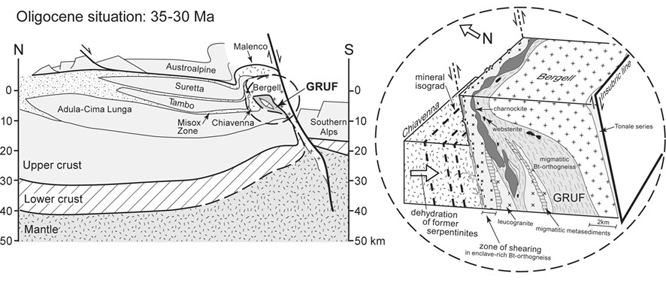
Fig.5: Oligocene Bergell intrusion favouring exhumation of the migmatitic lower crustal Gruf complex. From Galli (2013).
The intrusion of the Bergell pluton (Fig.5) is contemporaneous with migmatisation and deformation of the Gruf complex. This suggests that the two units share the same history since the Early Oligocene. The calc-alkaline magmas of the Bergell pluton and a few other smaller plutons to the north of the Insubric line were derived from a primitive mantle melt and have been channelled from the base of the continental crust into the Periadriatic Fault system.
The dynamics of the ascending Bergell pluton triggered and helped exhumation of the migmatitic Gruf complex. The Gruf complex, perhaps together with the migmatite-rich Bellinzona-Dascio zone, acted as partially molten lubricant at the base and the northern side of the intrusion. Migmatitic bodies related to the emplacement of calc-alkaline plutons are common in collisional orogenic belts and the ascending Bergell intrusion may have entrained crustal blocks containing charnockites, granulites and websterite to gabbronorite.
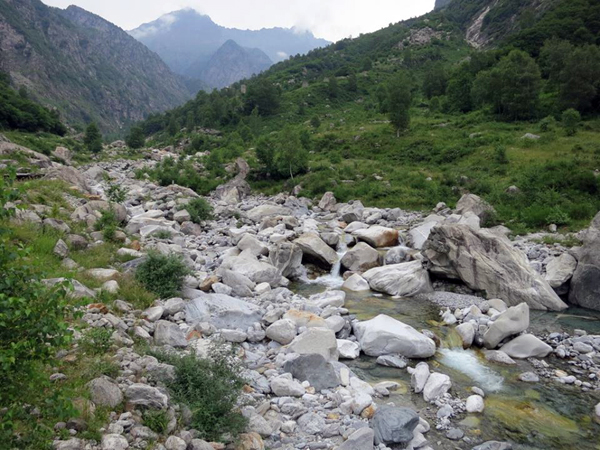
Fig.6: Codera River. Photographer: Angelo Digger.
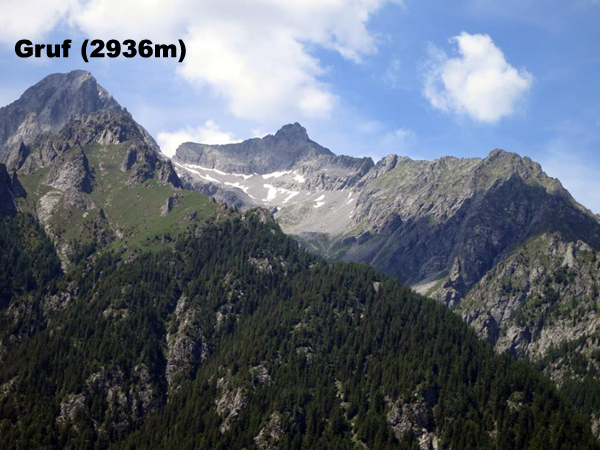
Fig.7: The "monte Gruf massif". Photographer: Angelo Digger.
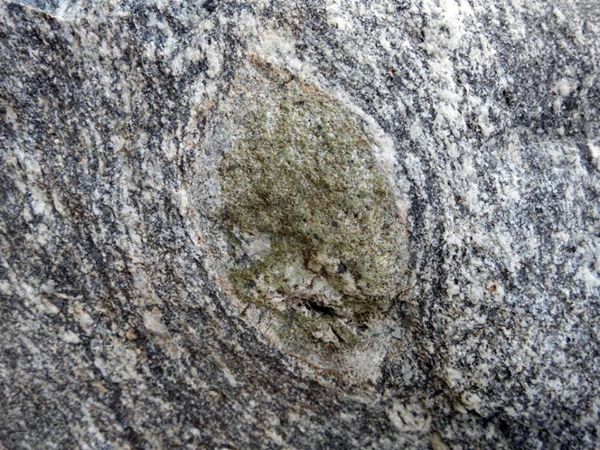
Fig.8: Metaperidotite enclave in Orthogneiss. Photographer: Angelo Digger.
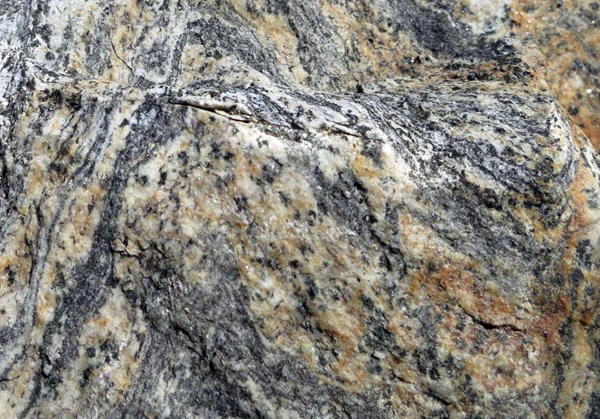
Fig.9: Biotite Orthogness. Photographer: Angelo Digger.
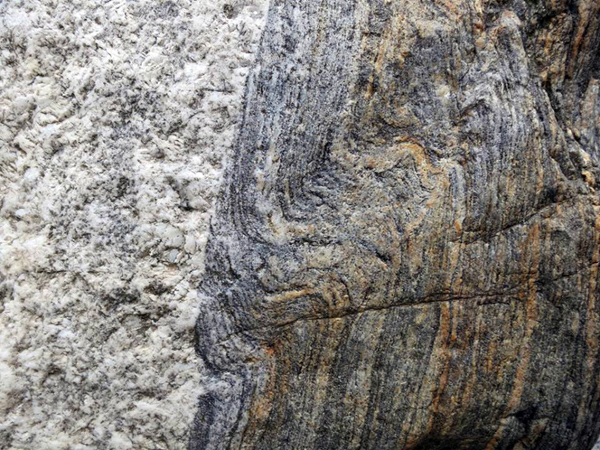
Fig.10: Migmatitic gneiss cut by a pegmatitic dyke. Photographer: Angelo Digger.
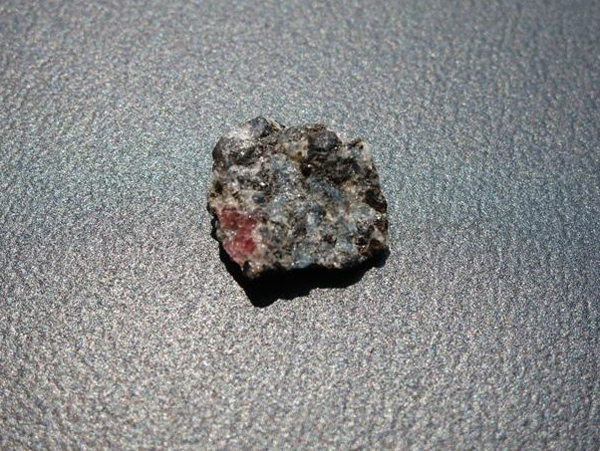
Fig.11: Sapphirine granulite: Red = garnet, black = Biotite-pyroxene, gree-blue = sapphirine. Photographer: Angelo Digger.
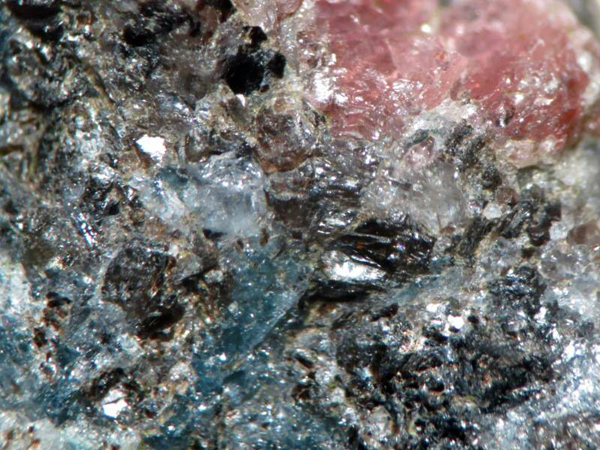
Fig.12: Sapphirine granulite: Red = garnet, black = Biotite-pyroxene, gree-blue = sapphirine. Photographer: Angelo Digger.
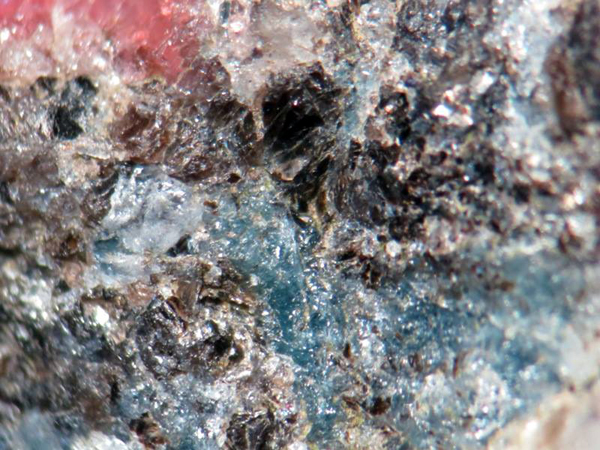
Fig.13: Sapphirine granulite: Red = garnet, black = Biotite-pyroxene, gree-blue = sapphirine. Photographer: Angelo Digger.
Samples doned by Angelo Digger
Bibliography
• Galli, A., Le Bayon, B., Schmidt, M. W., Burg, J. P., & Reusser, E. (2013): Tectonometamorphic history of the Gruf complex (Central Alps): exhumation of a granulite–migmatite complex with the Bergell pluton. Swiss Journal of Geosciences, 106(1), 33-62.
• Galli, A., Le Bayon, B., Schmidt, M. W., Burg, J. P., Caddick, M. J., & Reusser, E. (2011). Granulites and charnockites of the Gruf Complex: evidence for Permian ultra-high temperature metamorphism in the Central Alps. Lithos, 124(1), 17-45.


.jpg)
.jpg)
.jpg)
.jpg)
.jpg)
.jpg)
.jpg)
.jpg)
.jpg)
.jpg)
.jpg)
.jpg)
.jpg)
.jpg)
.jpg)
.jpg)
.jpg)
.jpg)
.jpg)
.jpg)
.jpg)
.jpg)
.jpg)
.jpg)
.jpg)
.jpg)
.jpg)
.jpg)
.jpg)
.jpg)
.jpg)
.jpg)
.jpg)
.jpg)
.jpg)
.jpg)
.jpg)
.jpg)
.jpg)
.jpg)
.jpg)
.jpg)
.jpg)
.jpg)
.jpg)
.jpg)
.jpg)
.jpg)